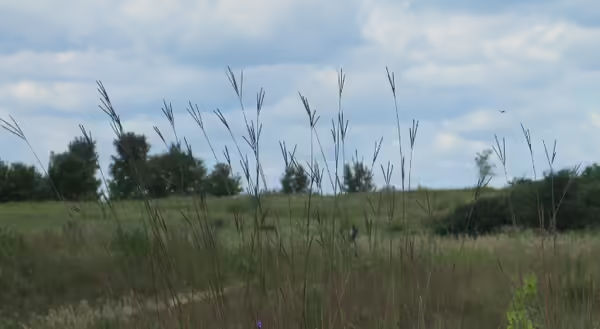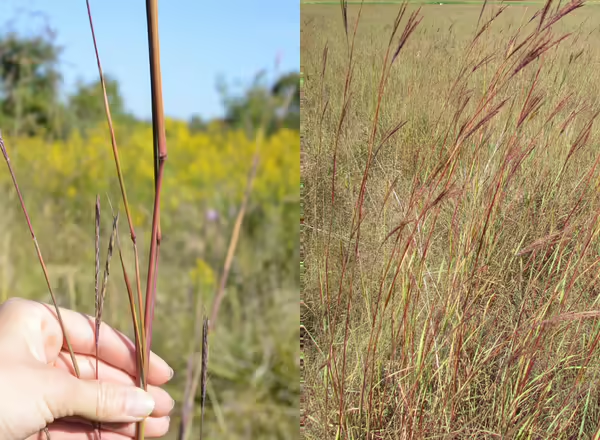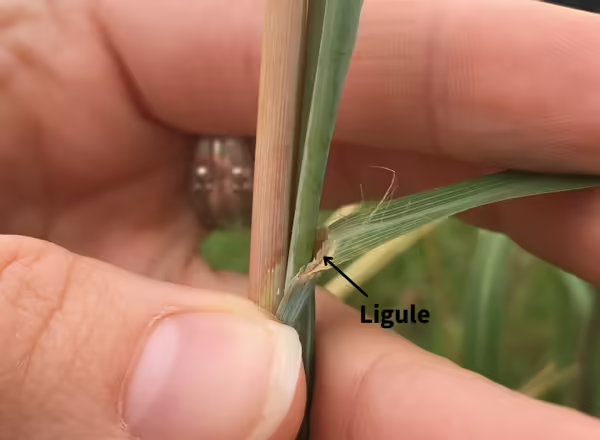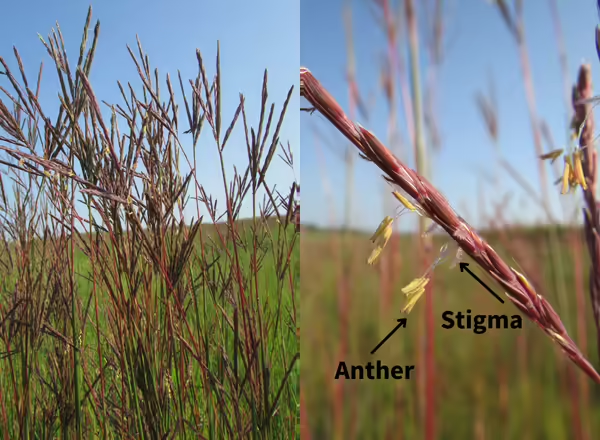
Most pictures and drawings of the tallgrass prairie feature one grass – Big Bluestem. This grass is a quintessential prairie grass that once covered Illinois. Also called Turkeyfoot, it’s likely that even if you aren’t familiar with grasses, you’ve seen this one. Today used extensively in prairie restorations, you can still see it growing along roadsides as well. Let’s take a closer look at Big Bluestem, Andropogon gerardii.
Illinois’ state grass
Did you know that Illinois has an official state grass? Seventeen states across the country have designated a state grass, just like a state flower or tree. Big Bluestem came out as the winner in Illinois after a poll was sent to students across the state in the late 1980’s.
Big Bluestem is one of three dominant grasses of the tallgrass prairie. Besides prairies, it can also be found in savannas and along roadsides. It is indeed large in size, often 6-8 feet tall when fully grown. It is a warm-season grass, meaning it puts out much of its growth and flowers in the heat of the summer.
Is it blue?
Although it has the name bluestem, the stem really looks more red than blue. The leaves can also be orange to reddish in color. Another feature I look for is the slightly flattened stem. Grass stems in general are round, but with Big Blue, when you roll the stem between your fingers, it is a bit flattened.
If we look to the collar region (where the leaf blade joins the stem), often you can find sparse hairs. But if we look for the ligule, it is short and membranous.



Turkeyfoot
The flowering head of the grass is pretty distinctive with its turkey foot shape. The inflorescence is a raceme made up of finger-like clusters of spikelets. If you catch it in bloom, you can see yellow anthers exserted (pushed out) of the spikelets. You can also see the stigmas, which look like feathers, that are white to pink in color.
Does it have wildlife value?
When it comes to supporting insects, some of our native grasses, Big Bluestem included, are used as host plants by skipper butterflies. This means the caterpillars of skippers will eat grass leaves. Grasshoppers also eat the leaves. Besides insects, the seeds produced can be eaten by sparrows, and Big Bluestem is a good forage grass for our hooved mammals.
Can I plant it?
Big bluestem is widely available at native plant nurseries, although I’d be intentional about where you plant it. It’s widely used in prairie restorations, although seeding in a little often goes a long way. If you desire wildflowers in your restoration, I’d establish those for a few years before adding in the grasses.
For the home landscape, I would probably save Big Bluestem for a border, an edged spot in your home garden, or an area that is mowed around regularly (think about those tall, statement grasses you see in front yards), so it doesn’t spread and push out other plants.
Never miss a new post! Sign up for our email list.
ABOUT THE AUTHOR: Erin Garrett is a Natural Resources, Environment, and Energy Educator for University of Illinois Extension serving Alexander, Johnson, Massac, Pulaski, and Union counties. Erin develops and delivers high impact programming to adults and youth to help them develop an appreciation for natural resources and to empower them to make small changes to positively impact the environment. Erin’s programming focuses on why homeowners should consider choosing native plants, how to support native pollinators, how to identify grasses, how to identify and manage invasive species, and developing an appreciation for prairie ecosystems.
ABOUT THE BLOG: Grasses at a Glance dives into grass identification, focusing on tips and tricks that make grass identification possible. Get information about native and non-native species, how to tell look-alikes apart, and which grasses you can find in Illinois.
Big Bluestem, Andropogon gerardii, is a native, warm season grass indicative of Illinois's tallgrass prairies. This robust bunchgrass often grows between five and eight feet tall. The stems of Big Bluestem are a bit flattened rather than perfectly round. ...